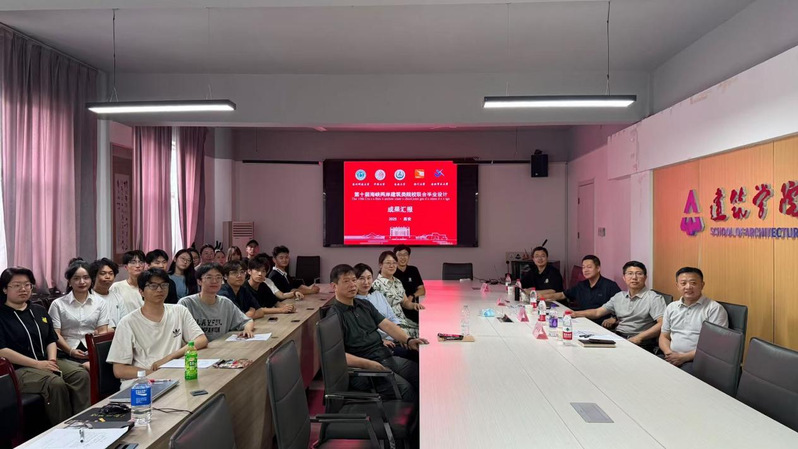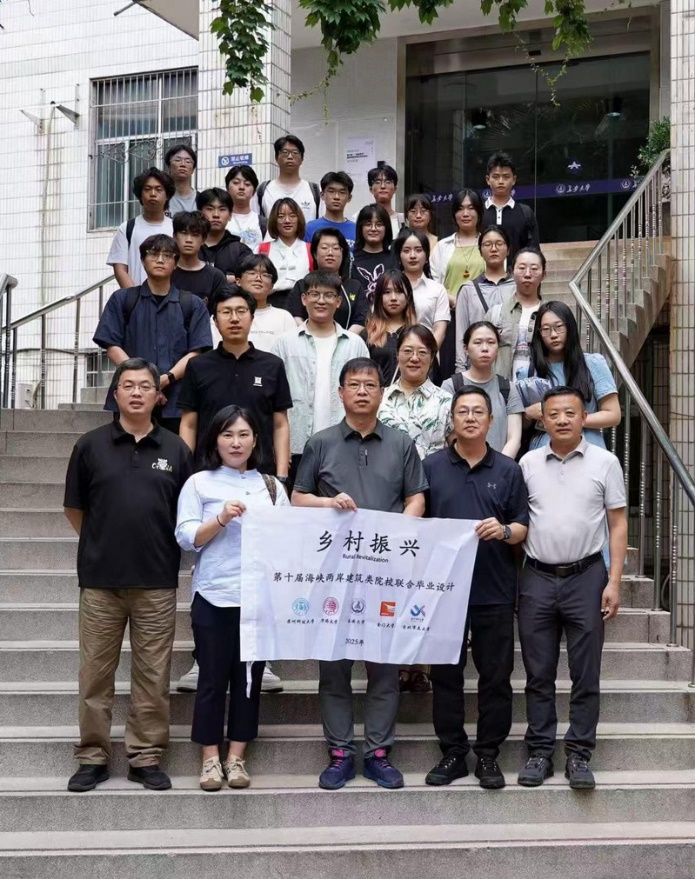On the afternoon of June 7, 2025, the final presentation of the 10th Cross-Strait Joint Graduation Design in Architecture, co-organized by Chang’an University, Suzhou University of Science and Technology, Huaqiao University, Kinmen University, and University of Taipei, was successfully held at the School of Architecture Building, West Campus of Chang’an University. The event was attended by Bai Haifeng, Senior Engineer of Shaanxi Cultural Relics Protection Engineering Co., Ltd.; Hui Zhao, Associate Senior Engineer of Shaanxi Institute of Cultural Heritage; Prof. Wang Weishan and Assoc. Prof. Xiao Ming from Huaqiao University School of Architecture; Assoc. Prof. Pan Bin from Suzhou University of Science and Technology School of Architecture and Urban Planning; Prof. Hou Quanhua, Dean of the School of Architecture at Chang’an University; Assoc. Prof. Zhang Wei; Lecturer Wang Yirui; as well as nearly 40 teachers and students from the five participating universities across the Taiwan Strait. The presentation was chaired by Prof. Hou Quanhua.

During the session, students from each university presented their graduation design projects under the theme “Conservation and Development — Rural Development Planning and Design in the Xi’an Haojing Heritage Area.” Their work covered a wide range of dimensions, including heritage conservation strategies, rural spatial reconstruction, community participation mechanisms, industry integration pathways, and cultural landscape shaping. The presentations demonstrated solid research foundations and diverse design perspectives. Review experts and faculty members provided in-depth critiques based on their respective academic and professional expertise. They evaluated the projects in terms of topic selection, logical structure, and design representation, affirming the students’ professional competence and teamwork demonstrated in preliminary research, problem analysis, and concept development. At the same time, they suggested that students further strengthen their ability to identify and refine the core conflicts of the site, enhance detailed spatial design control and practical implementation logic, and actively explore the application of emerging technologies such as AI, AR, and VR to enrich design expression and create immersive experiences.

Following the presentations, the instructors held discussions on organizational models, collaborative teaching mechanisms, talent cultivation pathways, and integration of curriculum resources for the joint graduation design, exchanging valuable experiences and insights.


